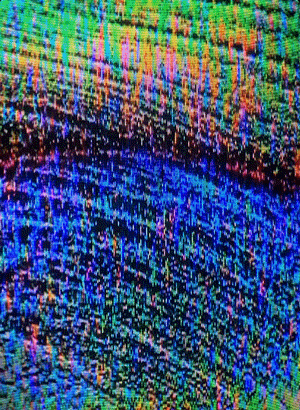Innovative Artists
Creating new forms of art through a special interaction between humans and computers
Having previously written about the significance of the CryptoPunks in the world of crypto art, I am now exploring other artists and genres within the web3 space that I find pertinent. My focus as a collector is on innovation and how artists are challenging and redefining traditional concepts in this new era. This article will showcase some of the most notable examples of these groundbreaking creators.
Given its novelty and rapid development, defining the genres that exist within crypto art can be challenging. Nevertheless, some genres have emerged as particularly suited to this field and have significantly influenced its development within the web3 world.
Pixel art, which I previously discussed in my article about the CryptoPunks, is one of the most popular genres in crypto art. This digital art form uses pixels to create images and is often associated with retro video games. Its popularity in the world of crypto art is largely due to its accessibility and simplicity.
XCOPY employs pixels in another unique way, deliberately 'blacking out' certain pixels to create a striking 'glitch' effect in his artworks. He is widely regarded as the pioneer and developer of the glitch art genre. Personally, I admire XCOPY's works for their social themes, philosophical messages, and the glitch aesthetic.
Bad Flavour by XCOPY
Generative art, another prominent genre in crypto art, is an intriguing genre that relies on algorithms and coding to produce ever-evolving and one-of-a-kind pieces. This digital-native field of art would not exist without the use of computers, which I find fascinating. Generative art involves the artist creating a set of instructions for the computer to follow in generating an original artwork, allowing for the possibility of randomness, chance, and interaction with the environment. One of the pioneers of this field for me is Agoria, who developed the concept of ‘biological generative art’ that aims to blend organic and AI (artificial intelligence) systems into a hybrid approach.
{Comp-nd} x [ L ] Market by Agoria
AI is something that artists (who create art on the blockchain) are increasingly utilizing to generate their works. Although AI art and generative art are distinct fields, they can be related in certain ways. AI involves the creation of intelligent machines that can perform tasks that typically require human intelligence, while generative art uses computational systems and algorithms to create unique and original artworks. The main difference between the two fields is that AI refers to the technology and methods used to create intelligent machines, while generative art is a form of artistic expression. However, AI can be used to create generative art and vice versa. Agoria for example has trained an AI to discover new data materials that the human eye cannot perceive and uses this to create his generative biological art through the computer.
Obvious is a collective of artists who are also exploring the relationship between humans and computers through their art, using AI to create visually compelling works. In the world today, where computation has taken over, it is important for artists to question and offer perspectives on current events to initiate discussion and raise awareness. Obvious is a prime example of this, as they utilize algorithms in innovative ways to generate striking pieces of art.
Security and Trust by Obvious
Another important artist for me in the world of crypto art is Sarah Zucker, who creates captivating multimedia artworks that blur the boundaries between technology and art. Her innovative work integrates augmented and virtual reality, providing audiences with immersive and interactive digital experiences. I am impressed by the distinctive video paintings that she creates, featuring stunningly vivid colors and geometric designs. Sarah has earned a significant following in the NFT art world for her unique style and approach to creating digital artworks.
TimeWave by Sarah Zucker
In the world of crypto art Pascal Boyart also stands out as a true innovator for me. He has a unique approach to creating art, which involves reinventing old master paintings into his own creations, imbuing them with political and social themes. As a lover of street art, I find Boyart's work especially fascinating, as he blends the physical and digital worlds by making parts of his murals digital. It is exciting to see existing artworks or media repurposed to create something new and fresh, and this is something that also draws me to the work of ROBNESS. As the pioneer of the trash art movement, ROBNESS creates new artworks using existing materials, resulting in a unique and thought-provoking artistic expression.
021 - St. Simon the patron of kidnap and torture victims, 010 - Sibyl 1, 030 - The placid angel
by Pascal Boyart
The emergence of NFTs has ignited a debate in the art world regarding the value of digital art and whether it deserves to be regarded as highly as physical art. Some contend that NFTs' scarcity and authenticity make them equally valuable to physical artworks, whereas others believe that digital art lacks the physical presence and cultural significance of traditional artworks. I am particularly drawn to artists who are innovative and experiment with the latest technologies to create their artworks because they have allowed me to become an art collector. The crypto art movement's most influential artists, in my opinion, are those who have been at the forefront of exploring the creative and technical possibilities of this medium, constantly pushing the limits of what is achievable in the realm of digital art.











